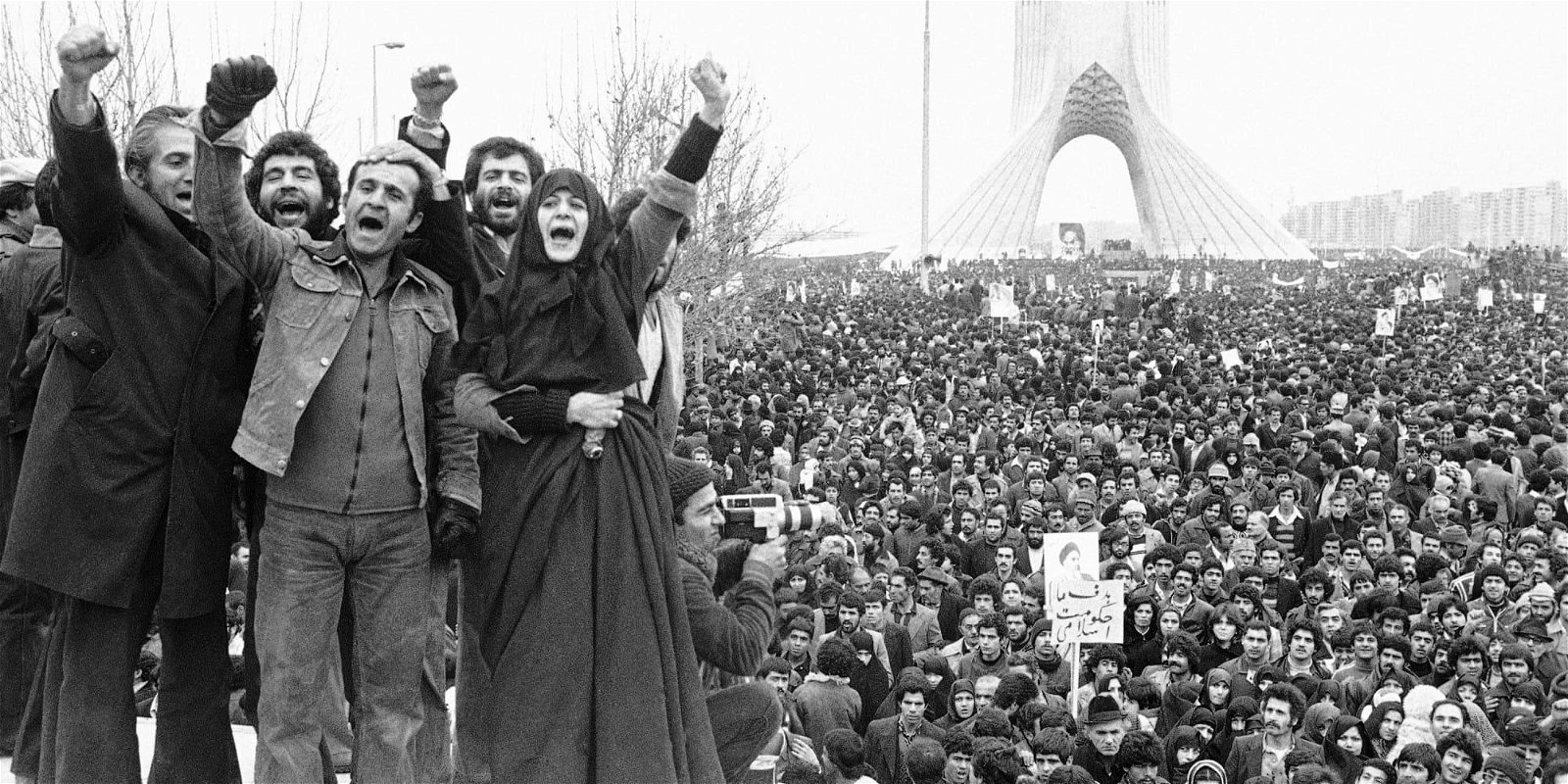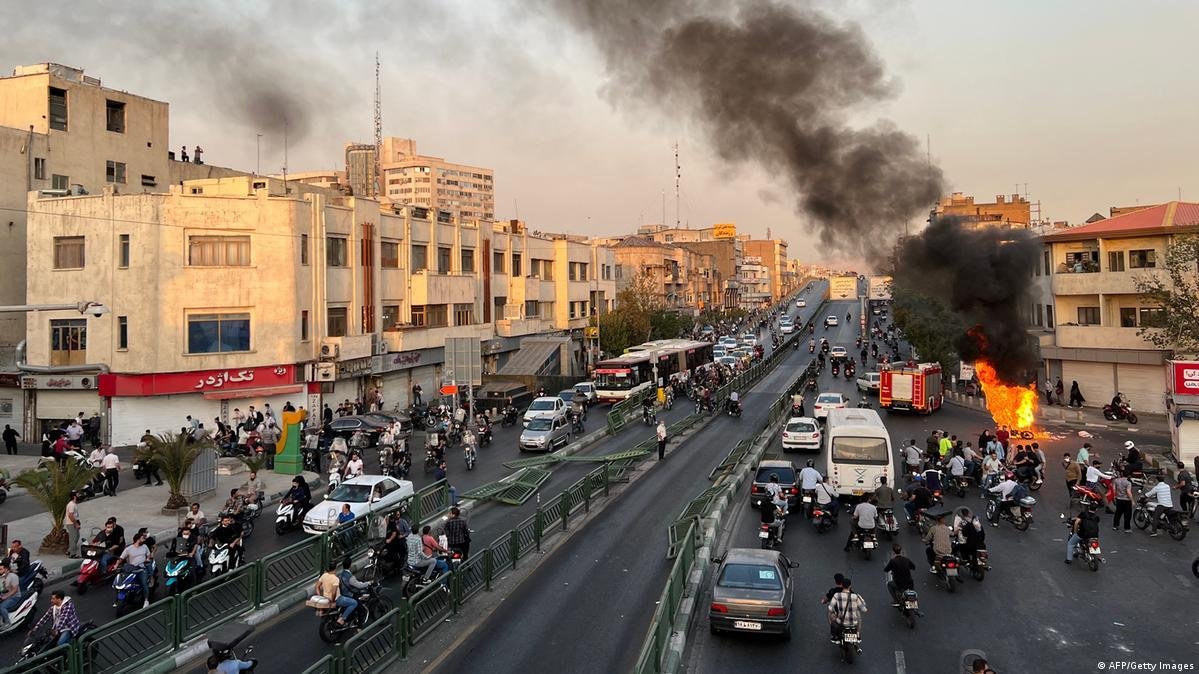Iranian revolution then and now: 1979-2022 Historical survey by Mikhail Shereshevsky
Mass protests have been held in Iran for more than a month. Most of the protesters are university and school students. They are occasionally joined by other categories of the population - primarily members of ethnic minorities. Recently, some oil workers went on strike; from time to time, bazaars hold strikes of sorts, closing the doors of shops and stalls and refusing to trade.
Previously, government officials had assumed that this riot would not go beyond what they described as the "new normal". There have been some fairly large-scale protests in Iran since 2017, but the authorities have suppressed them by force and have maintained control over society by flooding it with blood. This time, however, the movement has taken on a different dynamic, becoming more persistent, engulfing almost every city in the country and failing to be quelled. A total of more than 200 people have already been killed - the security forces are using live ammunition. But shots fired by police and pro-government militias have been met by people responding with petrol bottles and knife attacks so there are already many dead and wounded among the police too.
The protests in Iran have been going on for more than a month, Israeli publicist Yonah Jeremy Bob writes, which "has a growing number of analysts speculating about whether the rioters might finally topple the regime this time". Although such a scenario is still unlikely, it can no longer be ruled out.
The movement has been supported by many prominent journalists, musicians, and athletes. For example, Iranian athlete Elnaz Rekabi performed at a rock-climbing tournament (in Seoul) without a hijab. For this, according to the laws of Iran, she is entitled to imprisonment and a fine. Rekabi was thus supporting the protests that began after the death of 22-year-old Mahsa Amini, who was killed in September by Iran's vice police for "improperly" wearing a hijab.
Opponents of the regime are chanting "Down with the Islamic Republic!", "Death to the dictator!" and "Women, life, freedom!" Generally, these are human rights or liberal slogans. And here we should remember the 1979 revolution and understand what happened in Iran and why it has changed so much.

The last Iranian revolution, the one that took place in 1979, was treated more than coolly by the US authorities. And there was a reason for that. The 1979 revolution was directed against a pro-American brutal dictatorship, the Shah's regime. So they used anti-American slogans from the very beginning. They blamed the US for supporting autocracy while talking hypocritically about human rights.
Today there are slogans against the anti-American Iranian regime. This means that if it is overthrown, the new government may well become loyal to the Americans. However, there is still a long way to go before the government is overthrown.
But the main slogan of the protests back then, in 1979, was "Bread, work, freedom!" Extreme poverty and social inequality led to a social revolution, or at least to the emergence of elements of one. A huge labour movement, initiated by the oil workers, swept the country, the economy was paralysed in a general strike, and then labour collectives took over the factories and set up elected bodies of self-government - the Shuras.
Another force involved in the 1979 revolution was the clergy and the stratum of market traders closely associated with them (it was usually they who sent their sons to seminaries for training). Apart from the bazaar, the clergy had the support of millions of the poorest suburbanites, who survived on temporary earnings and material aid from the Muslim community - these people, often from villages, had traditionalist views and beliefs and depended on the clergy, who at their first call were ready to take to the streets. The slogan of this part of the revolutionaries was "The Shah is gone, the Imam has come!"
In the end, the struggle ended with the victory of the clergy, led by Khomeini, and the establishment of an Islamic republic - a theocracy in which the leader, elected for life by the clergy, wields almost absolute power. The Islamist dictatorship turned the rules of Islamic law (in its original interpretation) into national law, and it destroyed both the labour movement and the influential socialist groups, as well as liberal organisations which advocated a secular republic. Incidentally, this is why the authorities care so much about enforcing the women's dress code and why they punish violators harshly: an attack on ostensibly religious dress codes dictated from above becomes insubordination to authority within Iran's current system - a kind of church-state.
At present, as the Iranian author Ade Qudeli points out, the situation is quite different. All sections and classes of Iranian society want to change, except for the ruling class. This class consists of the military and officials associated with the Islamic Revolutionary Guard Corps (IRGC), as well as their relatives and friends. The ruling class owns many shares in major industries and enterprises, especially in oil production. They also have investments in neighbouring countries "to the extent that they have significant political influence there, for example in Iraq, Syria, and Lebanon".

Other assets are owned by powerful bonyads, foundations that are run by clerics, or, again, individuals close to the IRGC. These groups report directly to the Iranian cleric leader, Ayatollah Ali Khamenei, are not subject to public scrutiny, and do not pay taxes. Asthan Quds Razvi, one of the most prominent companies, was founded by Khamenei, and current President Ebrahim Raisi is a trustee of this allegedly philanthropic institution. According to Reuters, the total assets controlled by Khamenei amounted to $95 billion in 2013. According to other reports, the ruler of Iran personally manages (through this and other funds) more than $200 billion in funds, more than half of the country's GDP. Some of these funds are withdrawn by the Iranian elite to the UAE and Qatar, invested in various commercial projects, or used for the luxury consumption of the ruling class and its offspring.
Companies controlled by the IRGC and the clergy receive tax exemptions and government subsidies from the treasury, so they are not threatened with ruin. Sometimes they do not report on their expenditures and transactions at all. Even high-ranking technocratic Iranian officials do not know the exact figures for crude oil exports, since its sales are now handled by the powerful IRGC. Thus, Iran's economic management system means an increase in unproductive spending, which is paid for out of pocket by the taxpayers - i.e. the rest of the country. Iran's public sector and its associated private enterprises are nothing more than a freeloading system for the elite, troughs created to steal from the rest of the country, to embezzle its income. This leads to an increase in social inequality, poverty for some, and enrichment for others. The ruling class has clung to power, revels in luxury, and is prepared to persecute and murder anyone who disagrees with the existing order.
The relationship of this bureaucratic caste, Qudeli argues, with commercial capitalists (exporters of agricultural products to countries such as Russia and Türkiye and importers of consumer goods such as telephones, computers, etc) and the middle class, such as farmers and small traders, is ruined.
This has happened for two reasons. First, because the bureaucratic bourgeoisie dominates markets because it enjoys tax and tariff exemptions. Second, because of the sanctions imposed by the West, in the absence of a new "nuclear deal", independent small and medium-sized businesses are being destroyed. The sanctions have hit previously established supply chains and caused a fall in the incomes of the population. As a result, even the majority of the capitalist class, with the exception of the bureaucracy affiliated with the clergy and the IRGC military, want regime change.
Discontent now extends to the general population, including small and medium-sized businesses, university students, the working class, and the poor. More than half of Iranians are at or below the poverty line. But unlike in 1979, the working class is not making independent demands other than economic ones, nor is it pushing for control of factories and plants. Although some illegal workers' organisations have supported the protests, there have been no major workers' protests so far. But maybe everything is still to come. In any case, unless millions of new people join the protests, they are unlikely to win.
The protests are multi-class democratic and there are no social class or corporate slogans at all. Surprisingly, the protesters have not yet formed any organisation of their own. This is another difference from the workers' (factory) and neighbourhood councils of 1979, which not only seized factories but also took control of food stores and other stocks of goods in Tehran in 1979, distributing them for free among themselves. Tehran 1979 was in some ways reminiscent of the Paris Commune of 1871, and in some ways went much further with the communalisation of things and industries. However, these processes were later reversed and destroyed by the Islamic Republic - a clerical force that seized state power and property, backed by a special religious army (the IRGC) and trained Basij militias drawn from the suburban poor.
On the contrary, contemporary Iranian cities have become the scene of chaotic mobs fighting Basij and policemen, and chanting anti-government slogans with a slight touch of liberal democracy and feminism. It is not entirely clear what they are proposing instead of an Islamic republic. Most likely a Western-style representative parliamentary democracy, but this too is not articulated. And while in some places there have been block initiatives to organise protests, Jonathan Speier, an Israeli analyst of Iran and Iraq, points out that the protesters' lack of organisation and their lack of clear political and social ideas could be the cause of their demise.
However, the situation is changing all the time and the future looks uncertain.








